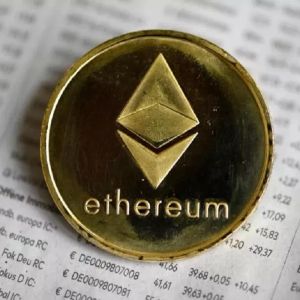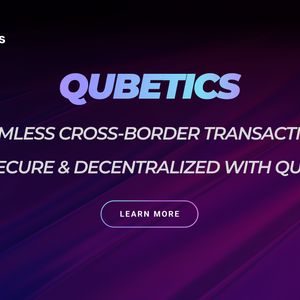The world of finance is undergoing a fascinating transformation, with traditional institutions increasingly exploring the potential of blockchain technology. A significant step in this evolution is the convergence of traditional finance (TradFi) with decentralized networks, often facilitated by robust interoperability solutions. This is precisely what we’re seeing with the latest news involving Wormhole crypto and financial giant VanEck. What is VanEck’s VBILL and Why is it Important? Let’s break down the core components of this exciting development. At its heart is VanEck’s VBILL, which represents a tokenized version of interests in the VanEck Short-Term Treasury ETF (VETS). Think of it as taking a traditional financial product – an ETF that holds short-term U.S. Treasury bonds – and representing ownership stakes as digital tokens on a blockchain. Why is this important? Tokenizing real-world assets (RWAs) like Treasury bonds offers several potential benefits: Increased Accessibility: While VETS itself is readily available via brokerage accounts, tokenized versions can potentially unlock new avenues for access, especially within the digital asset ecosystem. Improved Liquidity: Blockchain operates 24/7, unlike traditional markets. Tokenization can facilitate transfers and potentially enhance liquidity around the clock, although this depends heavily on the platforms and markets where the tokens trade. Enhanced Transparency: Transactions on a public blockchain are transparent and verifiable. Programmability: Tokenized assets can potentially be integrated into smart contracts and decentralized finance (DeFi) protocols, opening up new use cases (though regulatory considerations are paramount here). VanEck is a major player in the traditional finance world, known for its ETFs and asset management. Their move into tokenization with VanEck VBILL signals a growing confidence among established firms in the potential of blockchain for asset representation and distribution. How Does Wormhole Crypto Enable Cross-Chain Access for VBILL? Here’s where Wormhole crypto steps in, playing a crucial role as the interoperability layer. VanEck partnered with Securitize, a digital asset securities firm, to handle the tokenization process and ensure compliance with financial regulations. Wormhole’s role is to make the VBILL token, issued by Securitize, accessible across multiple blockchain networks. Interoperability is key because the digital asset landscape is not monolithic; it’s a collection of distinct blockchains like Ethereum, Solana, Avalanche, and BNB Chain, each with its own strengths and user base. Without interoperability, an asset existing on one chain is isolated from users and applications on others. Wormhole acts as a secure cross-chain bridge . It facilitates the transfer of information and value between these disparate networks. For VBILL, this means: The VBILL token is issued on a primary chain (likely Ethereum, given Securitize’s platform). Wormhole’s protocol enables the token to be securely represented and transferred to other supported chains like Solana, Avalanche, and BNB Chain. This isn’t necessarily moving the *actual* Treasury bond, but rather transferring the tokenized representation of the interest in the fund across chains. This multichain access is vital because it expands the potential reach of VanEck VBILL to users and platforms operating on different networks, enhancing its utility and potential liquidity within the broader digital asset ecosystem. Why is Cross-Chain Interoperability Crucial for Tokenized Assets? The success and widespread adoption of tokenized assets heavily depend on their ability to move freely and securely across different blockchain environments. Imagine a world where a tokenized stock or bond is stuck on a single chain – its potential use cases are limited to the applications and users on that specific network. A robust cross-chain bridge like Wormhole addresses this limitation. It unlocks: Wider User Base: Users on different chains can potentially access and interact with the tokenized asset. Increased Capital Efficiency: Capital doesn’t need to be siloed on one chain to interact with a specific asset. Access to Diverse Ecosystems: Tokenized assets can potentially be used in DeFi protocols, NFT marketplaces, or other applications on various chains, leveraging the unique features of each network. Enhanced Liquidity: By being available on multiple venues (chains), the asset is more likely to find buyers and sellers, improving its liquidity. The partnership between Wormhole and VanEck via Securitize highlights the critical infrastructure needed to bring sophisticated tokenized assets from traditional finance into the multichain world of crypto. Understanding Real World Assets (RWA) in Crypto The concept of bringing real world assets crypto is one of the most significant narratives in the current blockchain landscape. RWAs are tangible or intangible assets that exist outside the blockchain world but are represented on-chain as tokens. Examples include: Real Estate Stocks and Bonds (like the Treasury bonds underlying VBILL) Commodities Art and Collectibles Invoices and Receivables Tokenizing RWAs aims to bridge the gap between traditional finance and blockchain, potentially unlocking trillions of dollars in value by making these assets more liquid, fractionalizable, and accessible to a global, 24/7 market. The VanEck VBILL is a prime example of this trend, specifically focusing on making a stable, income-generating asset like U.S. Treasuries available on-chain. The infrastructure provided by layers like Wormhole crypto is essential for the RWA sector to thrive, ensuring that these tokenized representations aren’t confined to single chains but can move and interact across the entire digital asset ecosystem. What Does This Partnership Signal for the Future? The collaboration between VanEck, Securitize, and Wormhole is more than just a single product launch; it’s a strong signal about the direction of the market: Increasing TradFi Adoption: Major financial institutions are moving beyond just holding crypto and are actively exploring how to use blockchain for issuing and managing their own products. Growth of the RWA Sector: This partnership validates the potential of real world assets crypto and is likely to encourage other institutions to explore tokenization. Importance of Interoperability: The need for assets to be multichain is clear. Solutions like Wormhole are becoming foundational infrastructure for a connected blockchain future. Regulatory Compliance is Key: The involvement of Securitize highlights that bringing regulated financial products on-chain requires navigating complex legal and compliance frameworks. For users, this could eventually mean more diverse and potentially more stable assets becoming available within the digital asset space, although access to regulated products like VBILL may initially be limited to accredited investors or specific platforms. Are There Challenges or Considerations? While the potential is immense, it’s important to consider the challenges: Cross-Chain Security: Bridge security is paramount. While Wormhole has significantly enhanced its security model, the risks associated with cross-chain transfers are a constant consideration for the entire industry. Regulatory Clarity: The regulatory landscape for tokenized assets is still evolving globally. This affects how these assets can be issued, traded, and used. Complexity: Understanding how tokenized versions of traditional assets work on different chains requires user education. Underlying Asset Risk: The value of the tokenized asset is tied to the underlying real-world asset. For VBILL, this means the risks associated with U.S. Treasury bonds (e.g., interest rate risk) still apply. Navigating these challenges successfully will be crucial for the long-term growth and adoption of tokenized RWAs. Actionable Insights for the Community What does this mean for you, whether you’re a crypto enthusiast, developer, or traditional investor looking at this space? Stay Informed: Keep an eye on developments in the RWA sector and how institutions are leveraging blockchain. Understand the Tech: Learn about how cross-chain bridge technology works and its importance for a connected ecosystem. Evaluate Opportunities: As more tokenized assets become available, understand what the underlying asset is and how the tokenization process works. Remember that regulated financial products may have different access requirements than native crypto assets. For Developers: The growth of RWA on-chain creates new opportunities for building applications that interact with these assets across different chains. Summary: Bridging TradFi and DeFi with Wormhole and VanEck The partnership enabling VanEck VBILL to utilize Wormhole crypto for multichain access is a landmark moment. It signifies the increasing maturity of both the blockchain space and the willingness of traditional finance giants like VanEck to explore its potential. By leveraging Wormhole’s robust cross-chain bridge technology, tokenized assets like VBILL can overcome the limitations of single chains, potentially unlocking greater liquidity and accessibility. This development underscores the growing importance of real world assets crypto and the critical role that interoperability plays in building a more connected and efficient financial future, where traditional assets and digital networks can coexist and interact seamlessly. To learn more about the latest explore our articles on key developments shaping the crypto market , Bitcoin , and Ethereum price action and institutional adoption.



















